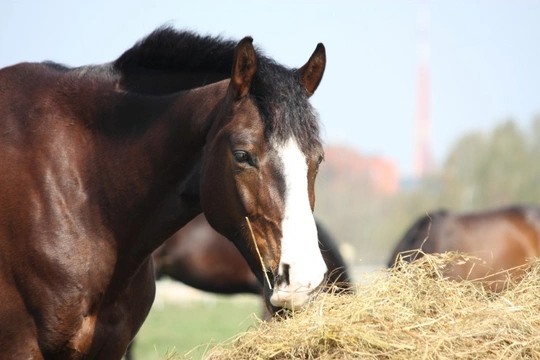
How to Change Your Horse's Feed Safely
There are many reasons why you may need to change your horse's feed. It could be due to a horse having put on too much weight or because they are injured and therefore standing in. It could even be because they are suffering from some sort of illness and totally off their feed, but for whatever reason, when changing a horse's diet it needs to be done slowly and carefully to avoid upsetting their digestive systems.
Research has shown that changing a horse's diet too quickly can trigger certain health issues, including colic and laminitis. You have to bear in mind that a horse's digestive system is quite sensitive and any changes if done too quickly could negatively impact their overall well-being and health.
A horse's digestive system has to adapt to any changes in their diet which means it can take a bit of time for them to do this in order to get the best out of their feed. Adding anything too quickly is never a very good idea either and this includes things like oil which may well just go straight through their systems. On the other hand, if the oil is added very gradually in smaller amounts, a horse stands a much better chance of absorbing all its goodness as it passes through their digestive tract. The same can be said of any other supplements when added to a horse's feed, if done gradually they will be able to absorb them that much better without upsetting their systems.
Hard Feed
If you have to up their hard feed ration the rule of thumb is to do it gradually at a rate of 1½ lbs a day. At the other end of the scale if you need to decrease your horse's daily ration this needs to be done slowly over a 7 to 14 day period and the rule of thumb is to decrease it by ¼ lb every two days.
If you are changing the type of hard feed altogether, the rule of thumb is to introduce the new feed to your horse over a 5 to 7 day period by replacing 25% of their usual feed with the new one and to do this every other day until the whole ration is made up of the new feed.
Hay
Changes to hay rations need to be done gradually to be on the safe side too and this is especially true if you are changing the type of hay from grass to legume. It's best to replace your horse's normal hay at a rate of 25% every two days until it's totally replaced with the new hay.
If you are switching from hay to haylage, this needs to be done very gradually to avoid any scouring. If your horse does start to scour, you need to stop giving them any haylage and revert back to hay immediately to avoid any further digestive issues.
Pasture
There are certain times of the year when grass is at its lushest which can cause all sorts of problems to certain horses. Spring and autumn grasses are very lush and it's the time of the year when limiting turn-out to a few hours a day is often best. However, it's not only the amount of time a horse is allowed to graze that needs to be taken into account because it's the time of day they are allowed out to grass that can affect their digestive systems too. It's best to avoid early mornings because this is when the grass is at its most potent and to let them out at around 10 am for a few hours.
Equine nutritionists recommend that turn-out time can be safely increased by an hour or so a day once the lush grasses start to die off and only if a horse or pony is not prone to laminitis in which case restricted grazing at all times is a must. You could use a muzzle making sure that it fits really well and that your horse or pony cannot get it off which some of them are masters at doing.
Lastly
If your horse has been put on a specific diet by the vet, you would need to work with them. If it involves altering their rations any changes to a diet and the amount of forage and hard feed this would be set out by the vet. However, if you are changing anything in your horse's diet which includes adding any sort of supplement, it needs to be done very gradually so they get the best out of the supplement without it upsetting their delicate digestive systems. If you are changing a hard feed altogether it needs to be done slowly because otherwise your horse is more at risk of developing colic.



